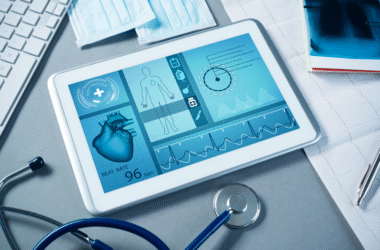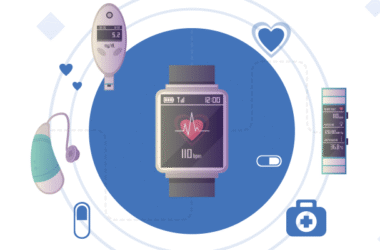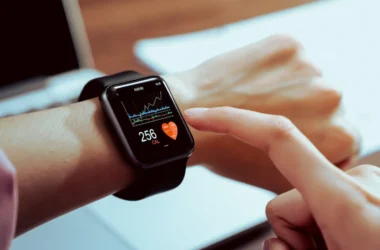The healthcare sector is currently generating more data than it ever did before. Hospitals, labs, clinics, and even wearable devices are gathering massive patient data every year. The data volume keeps growing: digital health records and test results, medical images, and insurance are all on the list. Although this growth is seen to assist doctors in treating patients better and quicker, there exists an abnormality, which is the damage being done to the environment by the healthcare data.
It is simple because when it comes to storing and handling this amount of information, big data centers, strong computers, and a lot of electricity are needed. The more electricity these systems are consuming, the more gases which are harmful to the air are being released. This is not the kind of thing that one normally discusses when they are discussing matters in the field of healthcare, but this is actually a reality that is gaining momentum at a very high pace.
The Growth of Healthcare Data
In the last couple of years, there has been an increasing rate of growth in data in the field of healthcare compared to any other field. The health sector generated 2,314 exabytes of data in 2020, the World Economic Forum said. The figure is supposed to continue increasing at the rate of approximately 36 percent annually. The majority of such data is electronic health records (EHRs), medical imaging and wearable health devices.

Hospitals continue shifting towards electronic documentation instead of using paper files, so the size of the accumulated information excessively increases. Concurrently, the storage space covered by high-quality scans such as MRIs and CTs is tremendous. As an example, one high-resolution MRI image may exceed 200 MB. Take that and multiply it by the millions of scans that are done annually and you can get the idea of just how much of storage space is required.
Environmental Impacts of Data Storage
Storing this massive amount of data uses energy. Large data centers run 24 hours a day to keep servers working. They also need air conditioners to stop machines from overheating. All this takes a lot of power.
According to the International Energy Agency, data centers now use about 1 to 1.5 percent of the world’s total electricity. While that may not sound like a lot, it adds up fast. Most of this power still comes from burning fossil fuels. This releases carbon dioxide (CO₂), one of the main gases that cause climate change.
Some data centers try to use green energy, but not all can do that. Many are still powered by coal, gas, or oil. This means the more data hospitals and labs collect, the more electricity is needed, and the more pollution goes into the air.
Another issue is electronic waste. As servers and storage devices get old, they need to be replaced. These machines are full of metals and plastics that are hard to recycle. Many of them end up in landfills, where they can leak harmful chemicals into the ground and water.
Why Healthcare Is Different
You might wonder why healthcare data matters more than other kinds. After all, every industry uses data. The difference is that healthcare data must be kept for a long time—sometimes for the entire life of a patient. It also must be protected more strictly due to privacy laws.
Hospitals cannot simply delete old files to save space. And they cannot move all data to cheaper or shared servers because patient information is sensitive. That makes the energy use higher and harder to reduce compared to fields like retail or entertainment.
How We Can Reduce the Impact
Even though healthcare data is important and must be kept safe, there are still ways to reduce its harm to the environment.
1. Use Energy-Efficient Data Centers
One good step is to move to data centers that use less energy. Some centers now use better cooling systems and newer hardware that uses less power. According to the Uptime Institute, energy-efficient data centers can reduce power use by 30 to 40 percent compared to older ones.
Hospitals and clinics can choose cloud services that run on renewable energy. Some cloud providers now run their servers using wind or solar power, which cuts down on pollution. This small change can make a big difference over time.
2. Delete Unused or Duplicate Data
Not all data needs to be kept forever. Many times, hospitals store the same file more than once. Removing unused or repeated files can free up space and lower power use.
Of course, this needs to be done carefully. Patient safety must come first. But with good data management, hospitals can keep what they need and delete what they don’t. This can also help reduce storage costs.
3. Compress Files Without Losing Quality
Modern tools can now shrink the size of medical images without changing their quality. Using better file compression helps save storage space and reduces the energy needed to manage files. For example, changing formats from older image types to newer ones can make a big impact.
Many health systems have started using software that does this in the background, so staff don’t even need to think about it. These small savings add up when used across many systems and hospitals.
4. Set Up Green IT Policies
Hospitals can make rules that support eco-friendly tech use. For example, they can ask vendors to meet energy-saving standards or buy hardware that uses less power. These rules can also include plans to recycle old machines instead of throwing them away.
Green IT policies should also teach staff to follow good habits. Turning off machines when not in use, using cloud storage when possible, and setting limits on file size can help lower power use.
Why This Matters Now
The planet is getting hotter, and climate change is not slowing down. Every part of society needs to do its share to cut pollution. Healthcare is meant to protect lives, and that includes caring for the world people live in.
If the current rate of data growth continues, and nothing is done to reduce energy use, healthcare’s digital systems could become one of the biggest silent polluters. According to a Health Affairs study, the U.S. healthcare system alone is responsible for 8.5 percent of the country's total greenhouse gas emissions. A large part of this comes from IT systems.
By thinking ahead and making smart changes now, hospitals and healthcare systems can reduce harm while still keeping patients safe.
Final Thoughts
Healthcare data is growing fast. This helps improve care but also causes more pollution through energy use and electronic waste. The good news is that this problem can be managed. Using cleaner data centers, deleting extra files, compressing images, and setting green IT rules are all useful steps.
Hospitals do not have to choose between protecting people and protecting the planet. With the right choices, they can do both.
Top of Form
Bottom of Form









